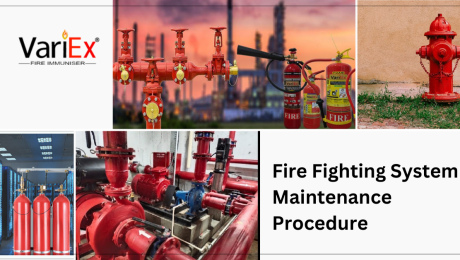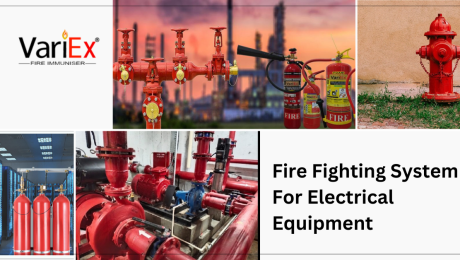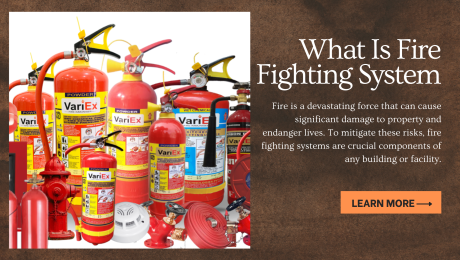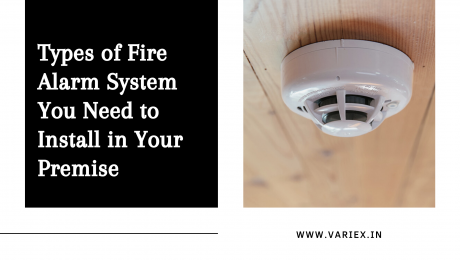Fire Fighting System Maintenance Procedure
Regular maintenance of fire fighting systems is essential to ensure their continued functionality and reliability in the event of a fire emergency. This guide outlines the key procedures involved in maintaining fire suppression systems to mitigate risks and protect lives and property.
1. Scheduled Inspections:
- Conduct scheduled inspections of all components of the fire fighting system, including control panels, piping, nozzles, detectors, fire alarms system, and fire extinguishers.
- Inspections should be performed by qualified technicians according to manufacturer guidelines and regulatory requirements.
2. Functional Testing:
- Perform functional tests of the entire fire fighting system to verify proper operation and response.
- Test alarms, detectors, and suppression equipment to ensure they activate as intended.
- Simulate fire scenarios to assess the system’s effectiveness in detecting and suppressing fires.
3. Inspection of Components:
- Inspect piping, valves, and nozzles for signs of corrosion, leaks, or damage.
- Check detectors and alarms for proper positioning, cleanliness, and functionality.
- Verify that control panels and electrical connections are secure and free from defects.
- Published in ABC Fire Extinguisher, CO2 Fire Extinguisher, Fire Alarm, Fire Extinguisher, Fire Fighting System, FIre Hydrant, Fire Safety Equipment, Fire Sprinkler System, Fire Suppression
Fire Fighting System For Electrical Equipment
In today’s technologically driven world, the reliance on electrical equipment is ubiquitous, spanning industries from manufacturing plants to data centers and commercial buildings. However, alongside the convenience and efficiency these systems provide, there exists a persistent risk of electrical fires. These fires, often swift and devastating, pose significant threats to personnel safety, property integrity, and business continuity. To address this critical issue, the implementation of comprehensive fire fighting systems specifically tailored for electrical hazards is paramount.
Types Of Valves Used In Fire Fighting System
In the realm of fire safety, the effectiveness of fire fighting systems relies heavily on the proper functioning of various valves. These valves play a critical role in controlling the flow of water, directing it to the areas where it’s needed most during fire suppression efforts. This article delves into the different types of valves used in fire fighting systems, highlighting their functions and importance in ensuring swift and effective response to fires.
What Is Fixed Fire Fighting System
A fixed fire fighting system refers to a comprehensive fire suppression system installed in a building or an industrial facility. It is designed to automatically detect and extinguish fires in their early stages without human intervention. This system typically consists of a combination of sensors, detectors, valves, pipes, and nozzles strategically placed throughout the area to provide effective fire protection. Examples of fixed fire fighting systems include sprinkler systems, gas suppression systems, water mist systems, and foam systems. These systems are crucial in preventing the rapid spread of fire and minimizing damage to property, as well as ensuring the safety of occupants and employees. It is essential to regularly inspect, maintain, and test these systems to ensure their proper functioning when needed.
What Is Fire Fighting System
A fire fighting system is an essential safety measure implemented in buildings to mitigate the risks associated with fire incidents. It comprises a combination of equipment, devices, and procedures designed to detect, control, and extinguish fires effectively. The primary components of a fire fighting system include fire detection and alarm systems, fire extinguishers, fire hydrants, and automatic sprinkler systems. Fire detection and alarm systems are crucial in early fire detection and alerting occupants, enabling them to evacuate the building promptly while the fire is extinguished. Fire extinguishers provide a means to extinguish small fires before they escalate, whereas fire hydrants connect to the municipal water supply and ensure a continuous flow of water for firefighting operations. Automatic sprinkler systems play a critical role in suppressing fires, as they activate automatically when the ambient temperature rises above a predetermined level. Overall, a well-designed fire fighting system is crucial for safeguarding life and property in the event of a fire emergency.
Types of Fire Alarm System You Need to Install in Your Premise
The fire alarm system is a very important aspect of any domestic and business setting. Fire alarm systems are essential for the protection of life and property and crucial to get a fire alarm system installed in your vicinity as a precautionary measure against accidental fires. According to 2010 Building Regulations, installation of fire alarms or fire detectors are a legal requirement under the Regulatory Reform (Fire Safety) Order 2005 in most non-domestic premises where people work or visit, such as offices, shops, hotels, public venues, and in almost all new buildings. Hence, any employers or building owners or occupiers must carry out, and keep updated, a fire safety risk assessment, and based on the findings of this assessment, they must ensure that appropriate fire safety measures, including fire detector system and alarms, are in place to minimize the risk of injury or loss of life in the event of a fire.
- Published in Fire Alarm
How to Buy the Best Fire Alarm for Your Building
Being caught in a fire mishap is scary to think about, but it’s an unfortunate truth that many firefighters have to fight with thousands of building fires every year. According to the Consumer Product Safety Commission, the risk of dying in homes without smoke alarms is twice as high as it is in homes that have working smoke alarms.
And, to escape a building fire, early warning is vital; and for this reason, every home or business needs a smoke alarm. A smoke alarm is one of the best yet most affordable ways to provide early warning when a fire begins at your premise. A fire alarm or smoke detector is a portable device, which can help prevent injuries and minimize property damage if it is installed and maintained properly.
But with several different types of automatic alarm systems out there, it can be confusing to know which one is the best for your house. Therefore, we are writing this Blog that will help you to choose the best one for faster smoke detection. Let’s get started!
- Published in Fire Alarm









